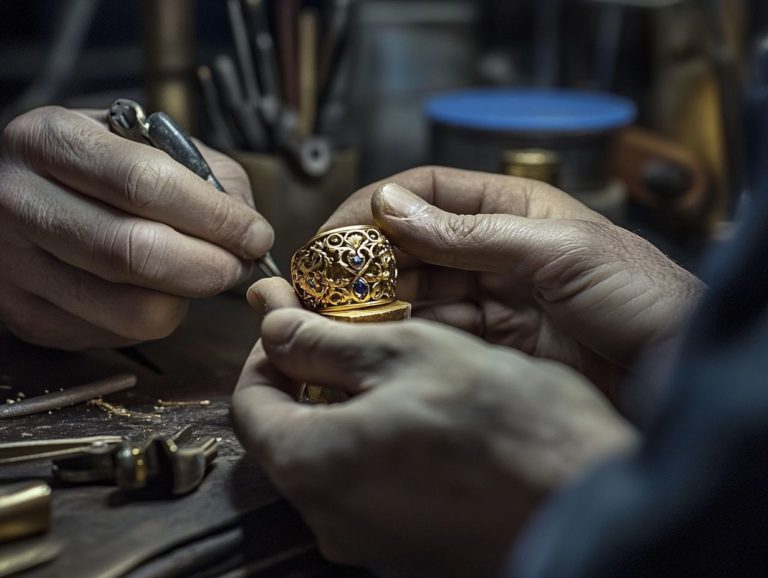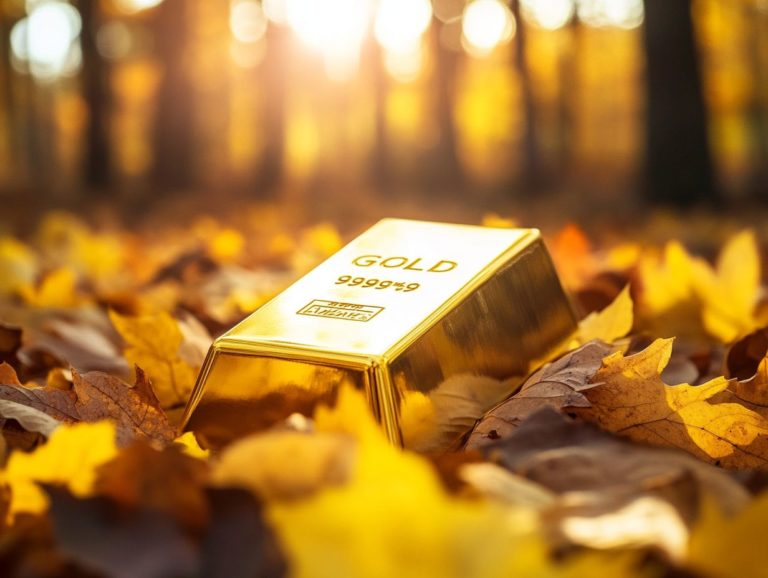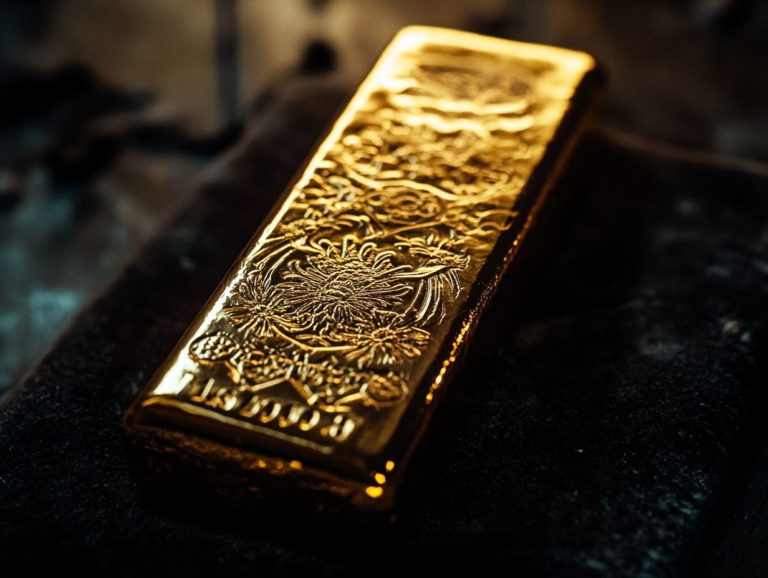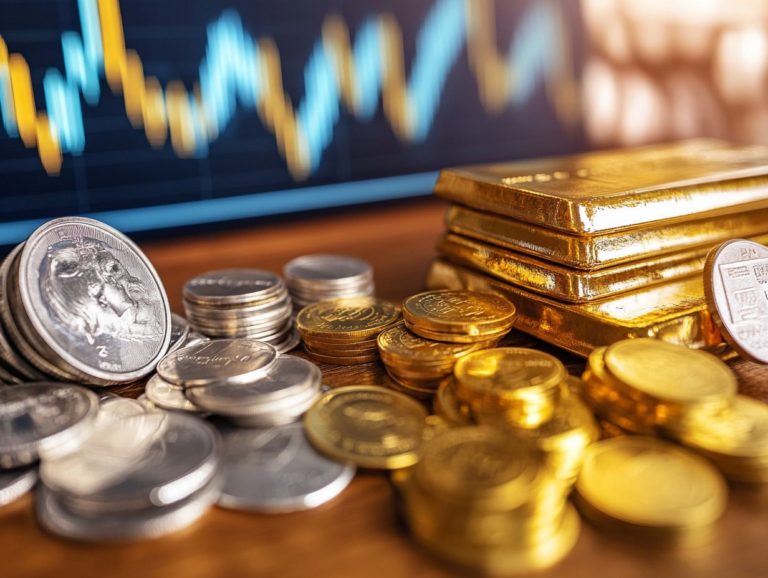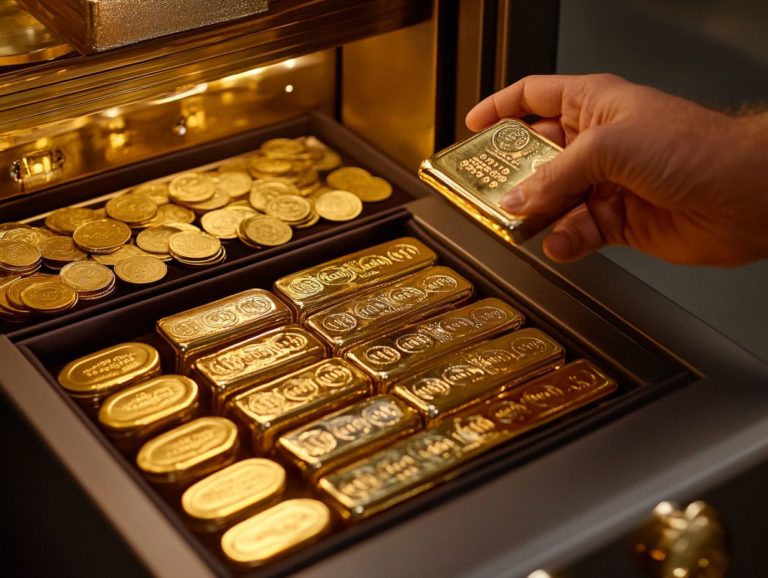5 Key Indicators of Precious Metal Market Health
The precious metal market presents a dynamic landscape shaped by various factors that can influence prices profoundly.
To navigate this arena effectively, you must understand the relationship between gold and silver prices, the changing dynamics of supply and demand, and the role of central banks in the market.
The impact of industrial applications and broader economic conditions also plays a significant role in shaping market trends.
This article explores five key indicators to help you assess the health of the precious metal market and make informed investment decisions.
Contents
- Key Takeaways:
- 1. Gold and Silver Prices
- 2. Demand and Supply
- 3. Central Bank Reserves
- 4. Usos industriales y tecnol gicos
- 5. Economic and Political Factors
- How Can Investors Monitor the Health of the Precious Metal Market?
- How Do Changes in Demand and Supply Affect the Market?
- What Role Do Central Banks Play in the Precious Metal Market?
- How Do Industrial and Technological Uses Impact the Market?
- What Impact Do Economic and Political Factors Have on the Market?
- Frequently Asked Questions
- What are the 5 key indicators of precious metal market health?
- How does demand affect the health of the precious metal market?
- What is the role of supply in the precious metal market health?
- How does inflation impact the health of the precious metal market?
- Why are interest rates considered a key indicator of precious metal market health?
- What role do geopolitical factors play in the health of the precious metal market?
Key Takeaways:
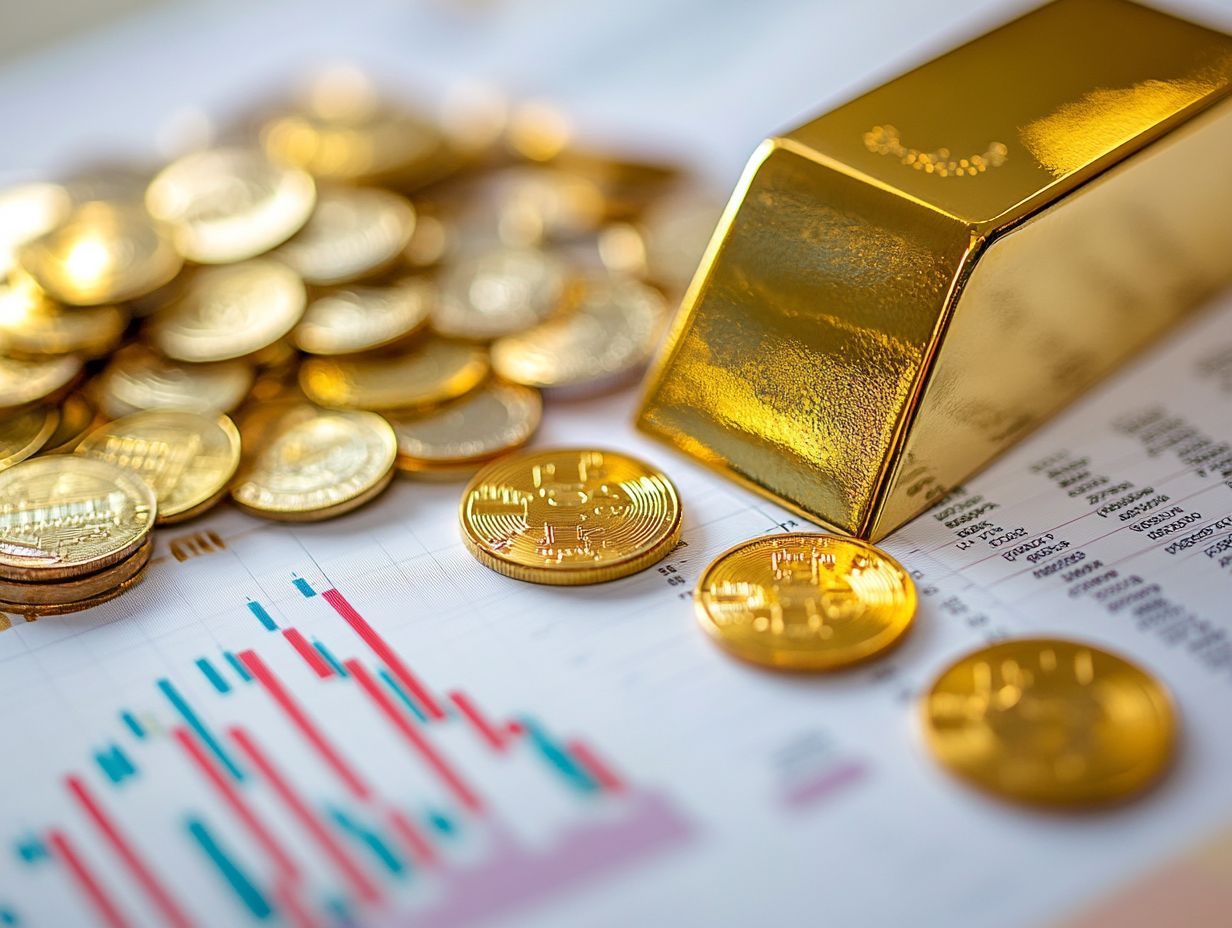
- Gold and silver prices are primary indicators of the precious metal market’s health.
- Demand and supply significantly impact prices and overall market health.
- Central bank reserves influence the market, as their buying and selling decisions can affect prices and sentiment.
1. Gold and Silver Prices
The prices of gold and silver are critical indicators in the precious metals market. They reflect economic trends and investor behavior influenced by factors like inflation and interest rates set by central banks. Understanding what criteria to use for precious metals investment can further enhance your insights into these trends.
As safe-haven assets, gold and silver serve as buffers against economic uncertainty. Their price movements are essential for understanding market demand and investment patterns.
Recently, fluctuations in inflation have caught analysts’ attention. When inflation rises, investors often flock to gold and silver for protection, which can push prices higher.
Conversely, when interest rates increase, the cost of holding non-yielding assets like gold becomes apparent, potentially reducing demand.
Central banks have significant influence by adjusting their monetary policies and reserves, shaping market dynamics. Investment vehicles like exchange-traded funds (ETFs) also play a crucial role, facilitating investments in these precious metals and affecting market sentiment.
2. Demand and Supply
Demand and supply affect the market prices of precious metals like gold and silver. The levels of mining production and market demand dictate their availability and value.
In recent years, fluctuations in mining output due to regulatory shifts and geological challenges have significantly impacted the supply chain. Investor behavior, shaped by global trends and economic uncertainties, determines how appealing these metals are as safe havens.
As central banks adjust monetary policies or global economies transform, these economic indicators can lead to surges or declines in demand. This ongoing balance complicates the relationship between supply and pricing dynamics.
3. Central Bank Reserves
Central bank reserves play a pivotal role in the precious metals market. Institutions like the Federal Reserve and European Central Bank shape the economic landscape through their gold and silver holdings, which are essential to their monetary policies.
These institutions manage their reserves strategically, especially during times of economic uncertainty or geopolitical tensions, to stabilize their currencies and protect against inflation.
For example, during rising tensions in the Middle East, central banks often increase their gold holdings as a safety net, leading to noticeable price fluctuations.
The Bank of Russia has a history of boosting its gold reserves in response to looming Western sanctions, influencing global supply and demand. Monitoring these trends can provide valuable insights into future price movements, highlighting the connection between central banks and commodities.
Stay informed about market trends and consider exploring more about investing in precious metals!
4. Usos industriales y tecnol gicos
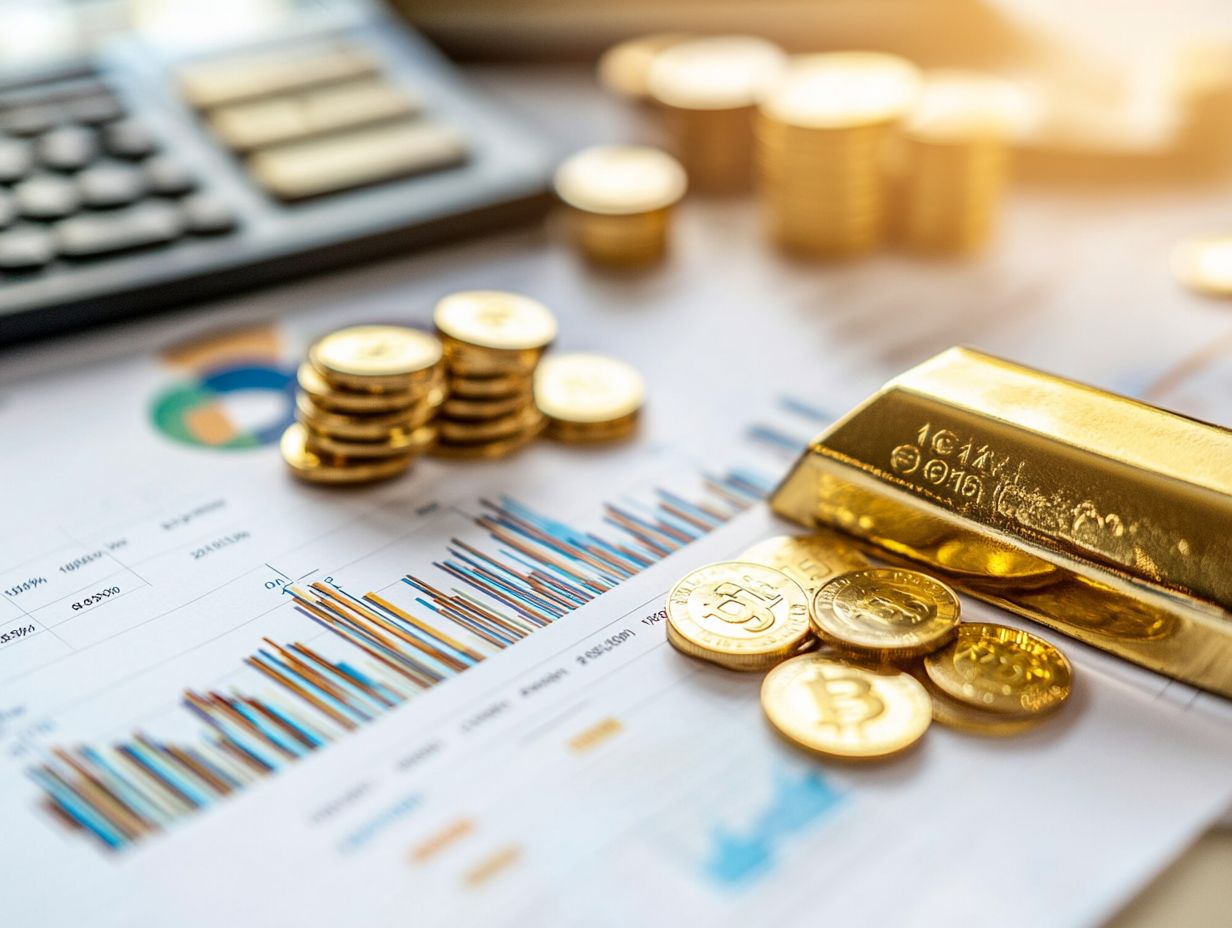
The industrial and technological applications of precious metals, particularly gold and silver, significantly shape their market demand. Innovations in fields like solar panels and photography highlight these metals’ unique properties and essential roles in modern technology.
Take silver, for example. Its use in conductive inks and coatings has skyrocketed, driven by the rise of wearable technology and smart electronics. This surge makes it increasingly appealing to investors.
Gold, on the other hand, has antibacterial properties, making it a hot commodity in the medical field, especially in devices that require sterilization.
These emerging sectors enhance the intrinsic value of these metals and influence investment strategies. As an investor, you should consider how technological advancements and shifting demand can lead to price fluctuations.
5. Economic and Political Factors
Economic and political factors profoundly impact the precious metals market. Understanding how to spot trends in precious metal investment can help you navigate issues like political stability, geopolitical tensions, and inflation trends that shape investor behavior and overall market sentiment.
This complexity requires a comprehensive risk assessment for investors navigating these intricacies. Understanding how these dynamics interplay is crucial for making informed decisions in the ever-changing investment landscape.
For example, rising inflation typically increases the demand for gold and silver as safe investments during uncertain times. Instability in a region, however, can cause sharp fluctuations in market prices.
It s crucial to keep in mind how global trade agreements and economic sanctions create ripple effects across various sectors. These factors further complicate the price trajectories of precious metals. Staying informed about macroeconomic indicators and the underlying political climate is essential for minimizing risks and optimizing potential returns.
How Can Investors Monitor the Health of the Precious Metal Market?
You can effectively monitor the health of the precious metal market by observing various indicators, including economic forecasts, investment trends, and financial transaction changes. This vigilance helps assess the overall risk associated with your investments in precious metals, and utilizing the 5 must-have tools for precious metals investors can enhance your strategy.
To gain deeper insights, utilizing specialized financial tools, such as market analysis software and economic calendars, can be wise. These tools highlight key events influencing commodity prices.
Regularly following reputable financial news outlets and subscribing to newsletters focused on gold and silver trends will provide a continuous stream of relevant information.
Engaging in online forums and connecting with fellow investors can also yield valuable perspectives and strategies. Setting up alerts for significant price changes or market shifts helps you stay proactive, allowing for swift responses to opportunities or threats.
What Are the Main Factors That Affect Precious Metal Prices?
Several key factors influence precious metal prices, including economic indicators like inflation trends, interest rates set by central banks, and geopolitical tensions that sway global market conditions. Familiarizing yourself with the 5 must-know terms in precious metal investing can also enhance your understanding of these dynamics.
These elements shape the market landscape and determine investor reactions. For instance, rising inflation may lead you to gravitate toward the stability of gold and silver as protective investments during economic uncertainty.
Conversely, when interest rates increase, the opportunity cost of holding non-yielding assets like precious metals also rises, prompting reconsideration of investment choices.
Geopolitical unrest often triggers a flight-to-safety mentality, prompting a rush toward these metals as safe investments. By understanding the interplay between these crucial factors, you can gain valuable insights into the fluctuations of the precious metals market.
How Do Changes in Demand and Supply Affect the Market?
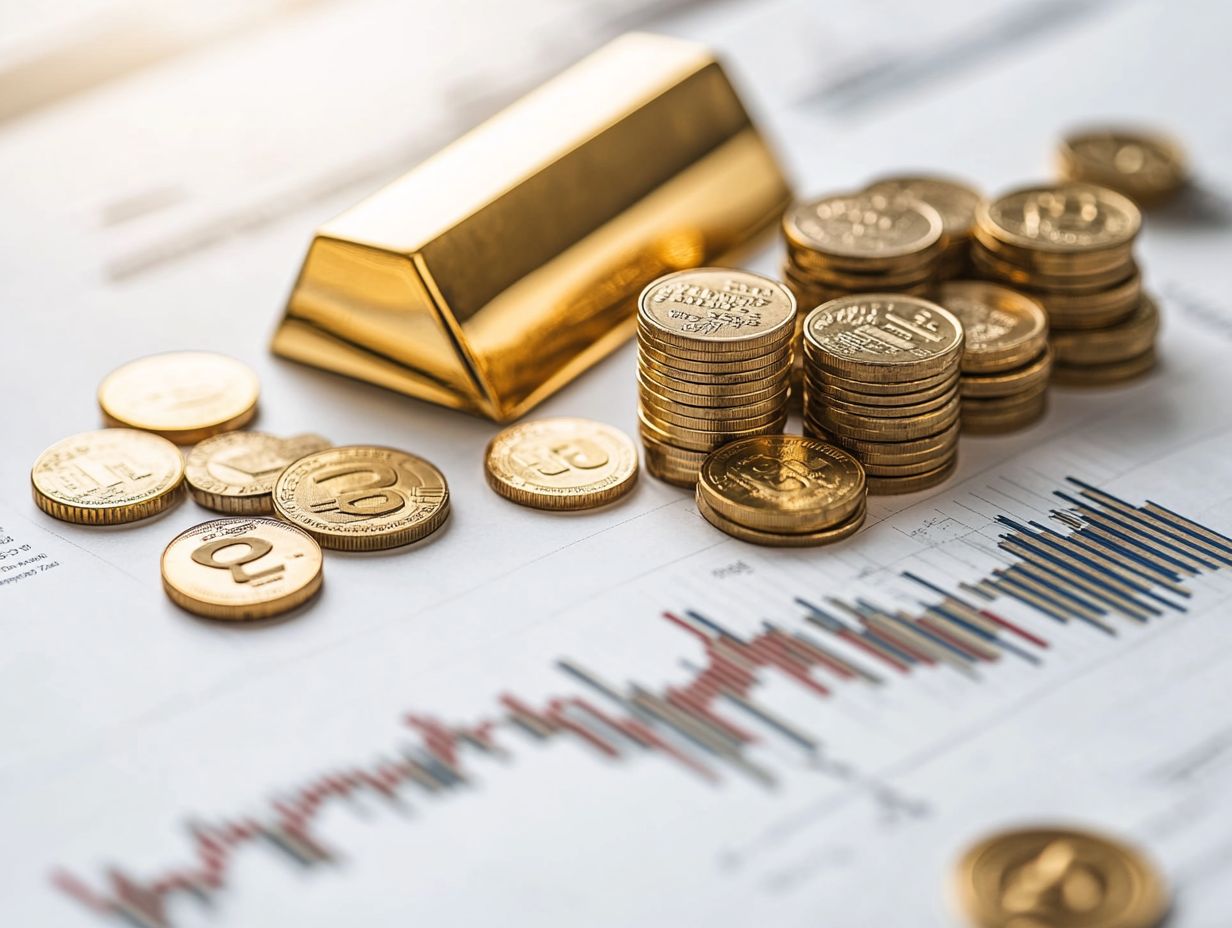
Changes in demand and supply dynamics play a crucial role in shaping the precious metal market. Fluctuations in mining production and shifting market demand directly influence prices and your investment strategies.
For example, when geopolitical tensions rise, you may notice a surge in demand for safe-haven assets, like gold. These are investments that tend to hold their value during economic uncertainty, often leading to price spikes.
On the flip side, if a significant technological advancement in recycling alters the supply of silver, it s a good time to rethink your investments.
These scenarios highlight the importance of monitoring market conditions closely. By staying informed, you can change your investments, protect against potential downturns, and seize emerging trends. This ultimately positions you for long-term success in an ever-evolving landscape.
What Role Do Central Banks Play in the Precious Metal Market?
Central banks hold a crucial position in the precious metal market. They shape prices and stability through their monetary policies and reserve management, especially concerning gold and silver, which are vital to their financial systems.
In recent years, various institutions have embraced diverse strategies regarding their gold and silver holdings. The Federal Reserve, for example, frequently adjusts its reserve policies in response to changing economic conditions.
When inflationary pressures rise, central banks might increase their gold reserves as a safeguard against currency devaluation. The Bank of England has undertaken significant initiatives, such as working with commercial banks to manage gold flows, ensuring liquidity and stability in the market.
These strategic moves not only demonstrate the institutions’ confidence in the metals but also reflect broader economic trends, significantly influencing investor sentiment and market dynamics.
How Do Industrial and Technological Uses Impact the Market?
Industrial and technological advancements significantly shape the precious metals market. Innovations in areas like renewable energy and electronics are driving demand for gold and silver beyond their traditional investment roles.
Take electric vehicles, for example. Their increased production requires substantial amounts of silver for batteries and electrical components, directly impacting market pricing and availability.
Similarly, as solar panel technology evolves, the need for silver increases due to its excellent conductivity, creating fierce competition among manufacturers.
These shifting dynamics transform the landscape of precious metals trading and compel you to reassess your investment strategies. Demand for these metals can vary based on the speed of technological advancements and the exploration of new applications. Stay alert and be ready to act fast.
What Impact Do Economic and Political Factors Have on the Market?
Economic and political factors significantly influence the precious metals market. Fluctuations in political stability and geopolitical tensions often lead to increased demand for gold and silver, especially as safe-haven assets during uncertain times.
Historical events, such as the 2008 financial crisis and ongoing trade wars, illustrate how investor sentiment shifts in response to economic turbulence. For instance, during the financial meltdown, gold prices soared while stocks plummeted, showing a clear flight to safety among investors.
More recently, geopolitical tensions in regions like the Middle East have driven individuals and institutions to seek precious metals as a hedge against potential economic fallout. This behavior highlights the intrinsic link between global events and market dynamics, shaping your investment strategies as you seek stability amidst chaos.
Frequently Asked Questions
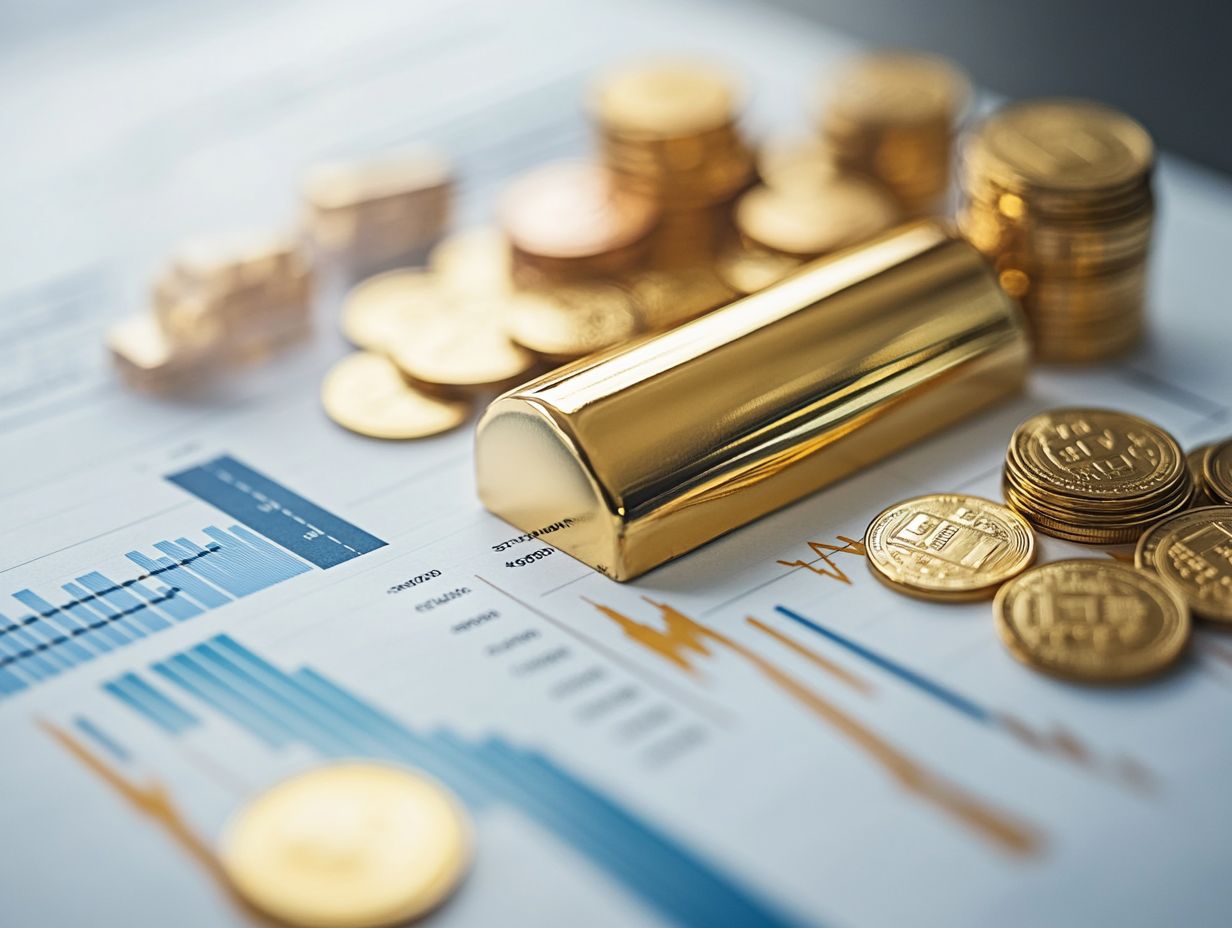
What are the 5 key indicators of precious metal market health?
The 5 key indicators of precious metal market health are demand, supply, inflation, interest rates, and geopolitical factors.
How does demand affect the health of the precious metal market?
Demand plays a crucial role in the precious metal market. High demand from investors and industries can drive up prices. Low demand can cause prices to drop.
What is the role of supply in the precious metal market health?
The supply of precious metals comes from mining and recycling. Increases in supply can lead to lower prices. On the other hand, decreases in supply can push prices higher.
How does inflation impact the health of the precious metal market?
Inflation is the general increase in prices of goods and services. As inflation climbs, investors quickly shift to precious metals for safety, boosting demand and prices dramatically.
Why are interest rates considered a key indicator of precious metal market health?
Interest rates are the costs of borrowing money. They can significantly affect the precious metal market. When rates are low, investors may look to precious metals as an alternative investment, driving up demand and prices.
What role do geopolitical factors play in the health of the precious metal market?
Geopolitical factors like political instability and global events can greatly influence the market. These factors create uncertainty and drive investors towards the safety of precious metals, increasing demand and prices.

